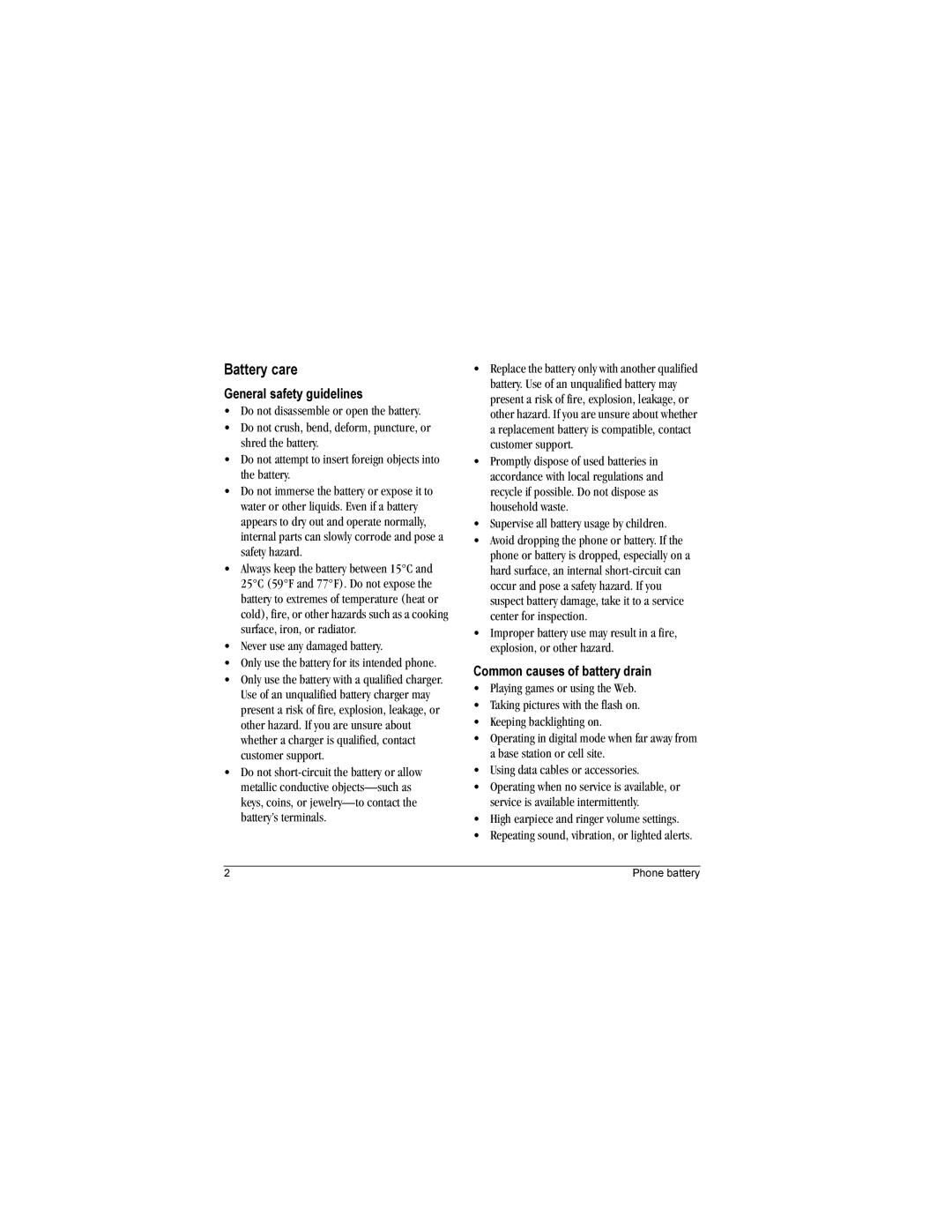Battery care
General safety guidelines
√Do not disassemble or open the battery.
√Do not crush, bend, deform, puncture, or shred the battery.
√Do not attempt to insert foreign objects into the battery.
√Do not immerse the battery or expose it to water or other liquids. Even if a battery appears to dry out and operate normally, internal parts can slowly corrode and pose a safety hazard.
√Always keep the battery between 15°C and 25°C (59°F and 77°F). Do not expose the battery to extremes of temperature (heat or cold), fire, or other hazards such as a cooking surface, iron, or radiator.
√Never use any damaged battery.
√Only use the battery for its intended phone.
√Only use the battery with a qualified charger. Use of an unqualified battery charger may present a risk of fire, explosion, leakage, or other hazard. If you are unsure about whether a charger is qualified, contact customer support.
√Do not
√Replace the battery only with another qualified battery. Use of an unqualified battery may present a risk of fire, explosion, leakage, or other hazard. If you are unsure about whether a replacement battery is compatible, contact customer support.
√Promptly dispose of used batteries in accordance with local regulations and recycle if possible. Do not dispose as household waste.
√Supervise all battery usage by children.
√Avoid dropping the phone or battery. If the phone or battery is dropped, especially on a hard surface, an internal
√Improper battery use may result in a fire, explosion, or other hazard.
Common causes of battery drain
√Playing games or using the Web.
√Taking pictures with the flash on.
√Keeping backlighting on.
√Operating in digital mode when far away from a base station or cell site.
√Using data cables or accessories.
√Operating when no service is available, or service is available intermittently.
√High earpiece and ringer volume settings.
√Repeating sound, vibration, or lighted alerts.
2 | Phone battery |
